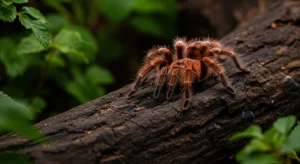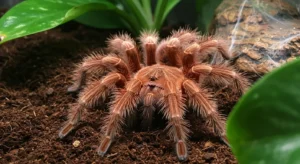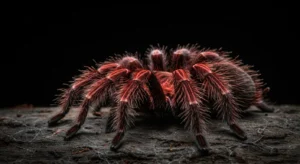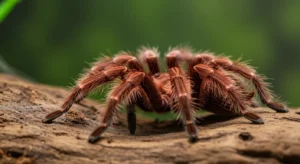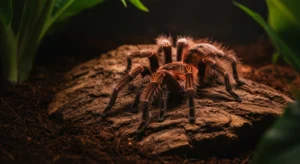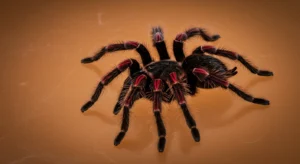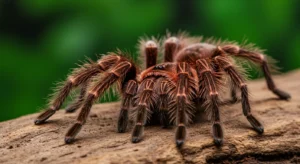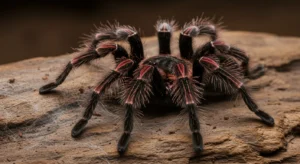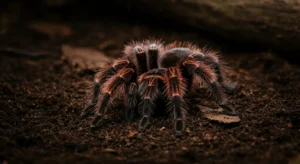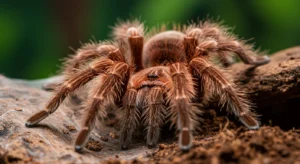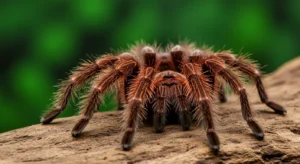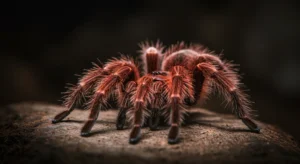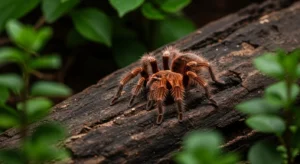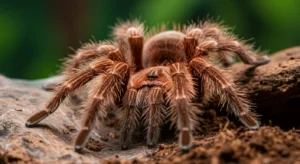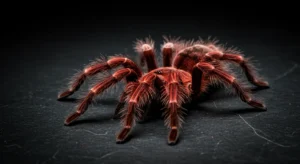What is the difference between Grammostola porteri and Grammostola rosea?
The distinction between Grammostola porteri and Grammostola rosea is one of the most frequently discussed and often confusing topics surrounding the popular Chilean Rose tarantula. For decades, most specimens in the pet trade were simply labeled G. rosea. However, current understanding suggests there are likely two distinct species or, at minimum, significantly different color forms involved.
The Taxonomy Tangle
Taxonomy, the science of classifying organisms, can be complex, especially with invertebrates where species definitions can rely on subtle morphological features (like the structure of reproductive organs) that aren’t easily visible. The history of Grammostola classification has seen revisions, contributing to the confusion.
Historical Context in the Hobby
Historically, almost all Chilean common tarantulas imported and sold were simply called Grammostola rosea. Over time, keepers began noticing consistent differences in coloration among the spiders available. This led to the informal distinction between the “Normal Color Form” (NCF) and the “Red Color Form” (RCF).
- Normal Color Form (NCF): Typically associated with Grammostola porteri.
- Red Color Form (RCF): Typically associated with the “true” Grammostola rosea.
This hobby-based separation gained traction and aligned with scientific suggestions that these might represent different species or distinct populations.
Commonly Cited Differences (NCF vs RCF)
While identification based solely on appearance can be unreliable, here are the generally accepted visual distinctions:
| Feature | G. porteri (NCF – Normal Color Form) | G. rosea (RCF – Red Color Form) |
|---|---|---|
| Carapace Color | Typically tan, light brown, or greyish, often lacking strong red/pink hues. | Often displays distinct reddish, pinkish, orange, or coppery tones. Can be quite vibrant. |
| Overall Body Color | Generally drab brown or greyish body and legs. | May have reddish/darker hairs on abdomen and legs, appearing overall darker or more colorful. |
| Prevalence in Trade | Believed to be the most common form found in the pet trade, especially historically. | Less common in the trade than NCF, often specifically sought after for its coloration. |
It is important to note that clarifying the Chilean rose tarantula color forms can sometimes be tricky due to variations and intergrades.

The Scientific Perspective
Scientific literature and taxonomic experts increasingly support the separation. Differences in spermathecae (female reproductive organs) and palpal bulbs (male reproductive organs) are cited as key distinguishing features, though these require microscopic examination of mature specimens.
According to some sources, G. porteri was described by Chamberlin in 1917, while G. rosea was described by Walckenaer much earlier in 1837 (World Spider Catalog, 2023). The frequent misidentification in the past led to the widespread use of “rosea” for both.
Ongoing Research: Tarantula taxonomy is dynamic. Further genetic and morphological studies might refine or even change the current understanding of the relationship between G. porteri and G. rosea.
Implications for Keepers
For the average pet owner, the distinction primarily relates to appearance. Care requirements for both G. porteri and G. rosea are essentially identical.
- Care: Husbandry (enclosure, temperature, humidity, diet) is the same for both.
- Temperament: Both are generally considered docile, though individual variation exists in both forms.
- Breeding: For breeders, correct identification using morphological features (not just color) is crucial for maintaining pure lines if desired.
- Labeling: Responsible sellers often try to label specimens as NCF/porteri or RCF/rosea, but mislabeling can still occur, especially with younger spiders whose colors haven’t fully developed. Understanding the difficulty in distinguishing Grammostola porteri and rosea helps manage expectations when purchasing.
Conclusion: One Species or Two?
Current consensus leans towards Grammostola porteri and Grammostola rosea being distinct species or at least highly distinct, consistently different forms. While visually separable in many cases by carapace and overall coloration (NCF vs. RCF), definitive identification relies on examining reproductive structures.
For pet keepers, the main difference is aesthetic; for breeders and taxonomists, the distinction holds more significance. Regardless of the specific label, both offer the same benefits as hardy, generally docile beginner tarantulas.
Reference: NMBE – World Spider Catalog. (2023). Gen. Grammostola Simon, 1892. Natural History Museum Bern.
